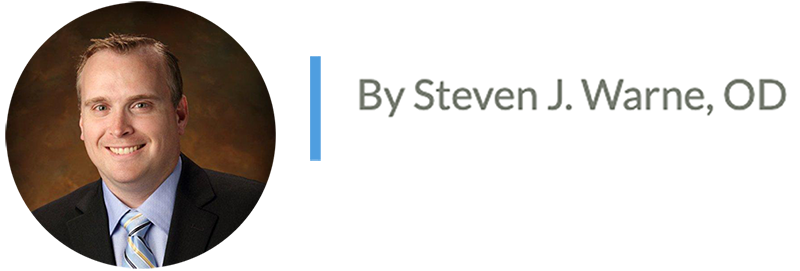
Daily Disposable contact lenses are the fastest growing contact lens segment worldwide. According to ABB Optical Group’s internal sales data, daily disposable contact lenses comprised fifty percent of all contact lens sales in 20191.
Doctors and patients alike prefer daily disposables over two-week and one-month contact lenses due to what I call the four C’s: Convenience, Comfort, Compliance, and fewer Complications. However, there are two other C’s which prevent prescribers from fitting or re-fitting patients into daily disposables contacts: Cost of the product and Complacency on the part of the provider or patient.
Let’s focus on how to overcome the cost barrier when prescribing daily disposable contact lenses.
Cost: Most eye care providers cite contact lens cost as the biggest obstacle to fitting or re-fitting patients in daily disposables. A patient who has been wearing a two-week hydrogel contact lens for 20 years may have sticker shock when they see the price of a 90-pack of daily disposables. What these patients fail to understand (often because we fail to educate them) is that the cost of a year’s supply of daily disposable contact lenses is comparable to two-week hydrogel lenses when factoring in the cost of contact lens solution and rewetting drops.
For example, two-week hydrogel contact lenses typically cost around $20/box, or $160/year. A bottle of brand name solution costs about $10/month (if used properly) and rewetting drops/artificial tears around $10/month as well. In total, a two-week hydrogel patient could spend upwards of $400 total for their contact lens care.
Now, that same patient fitted in a daily disposable contact lens would spend around $60/box or $480/year. Most new daily disposable lenses come with a manufacturer’s rebate, which can lower the cost by around $100, for an annual cost of around $380.
Even if you fit a patient in a premium silicon hydrogel daily disposable contact lens that costs $90/box or $720/year ($520 after a $200 manufacture’s rebate), the cost is only $120/year ($0.33/day) more than an annual supply of two-week lenses plus solution and rewetting drops.
Here are a few more tips when offering daily disposables:
- Refer to contact lens solution and rewetting drops as “hidden costs.” I find this term effective because nobody likes to pay hidden costs. I typically say, “Once you factor in the hidden costs of your current lenses, daily disposable contact lenses cost the same or even less.
- Memorize the price of your daily disposable contact lenses. Be able to quote the price on a year’s supply and compare it monthly or two-week lenses plus the “hidden costs” of contact lens solution and re-wetting drops.
- Keep manufacturers’ rebates in your exam room. Hand the patient a rebate and explain that they are online rebates, and there’s nothing to mail in. Work with your reps to make sure you have plenty of the latest rebates on hand.
- If patients are indecisive about switching to a daily disposable lens, ask them to try it. I usually say, “Just try it. If you don’t like it, call me and I’ll prescribe your old lens.” I learned this technique from a friend who used to sell mobile phones in a mall kiosk. When smart phones were appearing on the market, he would give his customers a smart phone and tell them to try it. He told them to return it if they didn’t like it and he would switch them back into a flip phone. He said nobody ever asked for their flip phone back. Likewise, I rarely have patients who ask for their old contacts.
By overcoming this cost barrier, we can prescribe more daily disposable contacts, thus providing our patients with a healthier, more comfortable lens for their vision needs.
Dr. Warne graduated from Nova Southeastern University in 2010 and completed a Cornea/Contact Lens Residency at the University of Alabama—Birmingham in 2011. He lives in Tobaccoville, North Carolina and fits traditional and specialty contact lenses for Wake Forest Baptist Health in Mount Airy and Winston-Salem, North Carolina.
1. https://www.clspectrum.com/issues/2020/january-2020/contact-lenses-2019
